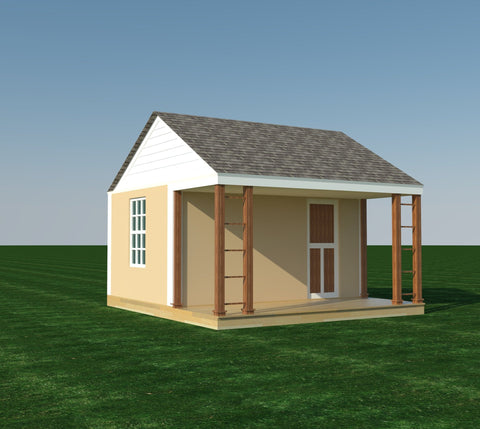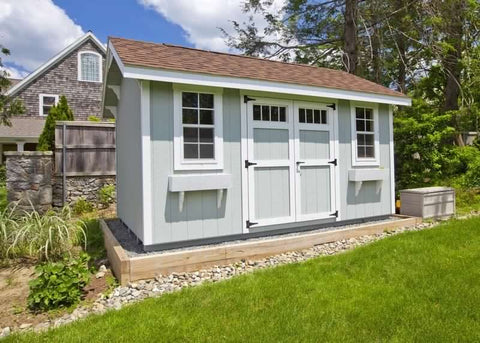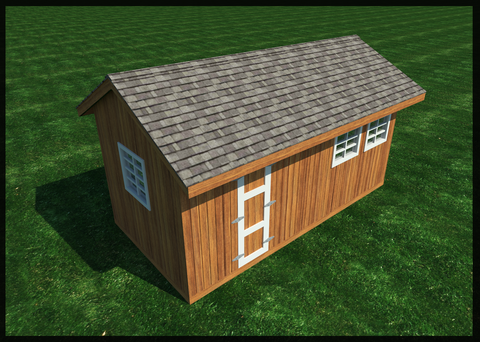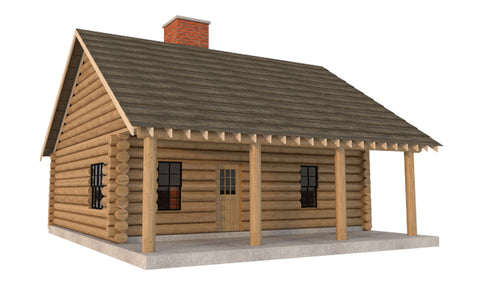Car Garage Building Plans DIY Backyard Workshop Shed Building 16' x 22'
These DIY plans for garage building will show you how to build your own 16' X 22' Garage. I love this layout because it gives you lots of room for a workbench alongside your parked car.
How to Build a 16' X 22' Garage
If you are looking for building plans to build a 16' X 22' Garage, you have come to the right place. 16' X 22' Garage plans include a full blueprint showing how to build your garage and a workbench. This is the perfect garage building plan for a family with children who drive. Whether you are an experienced DIYer or just starting out, these plans will help you build the perfect garage in no time.
2x4 framing is a good choice for a 16' X 22' garage
A 16' X 22' garage will require 21 pieces of 8' long two by fours. It will be anchored to a concrete slab. The bottom plate is two 2X4 studs and should be pressure treated lumber. The top plate is made of two 2X4 studs and connected by vertical studs, 16" apart on center.
The walls are a good place to use 2x6 framing. While it will be slightly more expensive than 2x4 lumber, it will give you more insulation options and provide a firm foundation for the loft. Also, it is more sturdy than 2x4 framing, which means it will withstand storms and high winds better. You can also use 2x4 framing for a 16' X 22' garage if space is tight.
Floating pad foundation
A floating pad foundation is a basic form of concrete foundation used to support a garage. A floating pad is usually just four to five inches of concrete poured over a 4" or 5" layer of clean stone. Similar to a floating pad, this foundation usually also has a moisture barrier beneath the concrete, mesh reinforcement for strength, and footers up to 12 inches deep around the perimeter. For more rigid garages, a monolithic foundation with a concrete frost wall is a good choice.
A floating pad foundation has the benefit of being cheaper than a full foundation, and it doesn't require frost barriers. While the cost of insulation and drains may be a minor inconvenience, the savings can be significant, especially for a small garage. Before pouring the concrete, mark the area with three-foot metal stakes and string. Be sure to use a level to ensure the string is even and straight. You should also mark the drainage area.
Adding a pedestrian door to a detached garage
Adding a pedestrian door to a separate garage is a good way to increase accessibility and safety. These doors are easy to use, provide easier access to the garage, and are versatile for different uses. While they are not cheap, pedestrian doors are a worthwhile investment for many homeowners. Here are some ways to add a pedestrian door to a detached garage:
A pedestrian door isn't necessarily necessary if your garage already has a standard access door. However, they can help you to add architectural style to your garage and make entry and exit easier. They also can be installed on basement garage doors, which are a good choice if you have limited space. They can also be used to add a pedestrian door if you have double garage doors.
All DIY plans are designed by Ben Stone. Ben is a retired Engineer in Canada. Ben also drafts these himself using the latest AutoCAD software to ensure accuracy. He studied Engineering back in the early 1980's. After over 30 years in the Construction industry he developed a passion for building cool items around his farm and cabin. These are great DIY projects. With a little skill anybody can Do It Yourself. Ben is always a email away if you have any questions while building one of his projects. He is adding new plans all the time.










